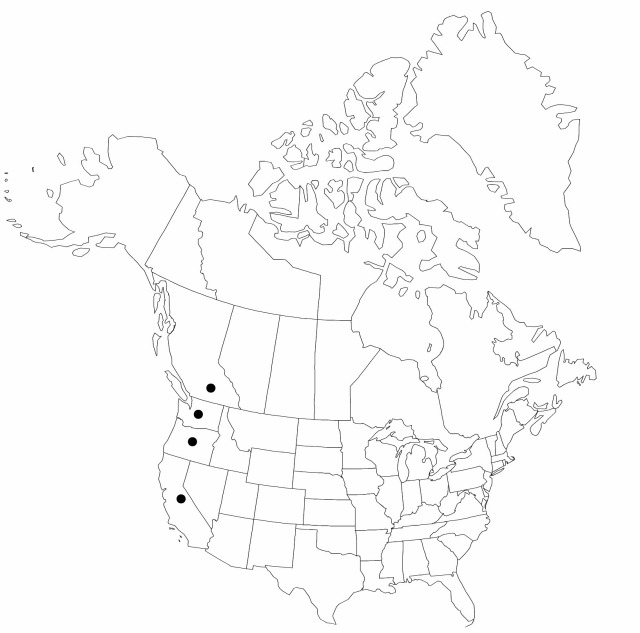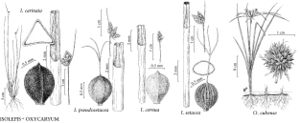Isolepis setacea
Prodr., 222. 1810.
Plants perennial (annual?), forming dense mats; rhizomes creeping; culms, leaves, and bracts orange-punctate at 10–15X. Culms 3–25 cm × 0.2–0.3 mm. Leaves: sheaths usually reddish proximally; distal blade rudimentary to 6 cm × 0.2–0.5 mm. Inflorescences: involucral bracts 1 or 2; proximal bract erect to spreading, 3–10(–20) mm; distal bract reflexed, to 5 mm. Spikelets 3–6 × 2 mm; scales partly orange- to red- or blackish brown, midrib greenish to stramineous, not gibbous, prominently ribbed near midrib, often with 1+ pale veins on dark sides, 1.2–1.6 × 0.6–1 mm, membranous, hyaline, apex rounded to obtuse, mucro to 0.1 mm; proximal scale like others. Flowers: anthers 0.3–0.5 mm; styles 3-fid or 3-fid and 2-fid. Achenes falling separately from floral scales, orange-brown, each face prominently longitudinally 5–8-ribbed, many fine transverse ridges evident at 20–30X, broadly obovoid to oblong, thickly biconvex to compressed-trigonous, abaxial angle obscure, lateral angles prominent, faces convex, 0.8–1 × 0.5 mm. 2n = 28.
Phenology: Fruiting late spring–fall.
Habitat: Stream banks, pond margins, ditches, coastal, rarely inland
Elevation: 0–1500 m
Distribution

Introduced; B.C., Calif., Oreg., Wash., Eurasia, Africa, Australia (including Tasmania), New Zealand.
Discussion
Isolepis setacea belongs to a distinct group of species characterized by ridged achenes (A. M. Muasya et al. 2001). Isolepis setacea was collected in 1874 on waste at Camden, New Jersey, and in the 1880s at Philadelphia, Pennsylvania; it has not persisted in the East. It has been known from the Pacific Coast since at least 1921. It is reported as native to Eurasia and Africa. It is cultivated as an ornamental.
Selected References
None.
